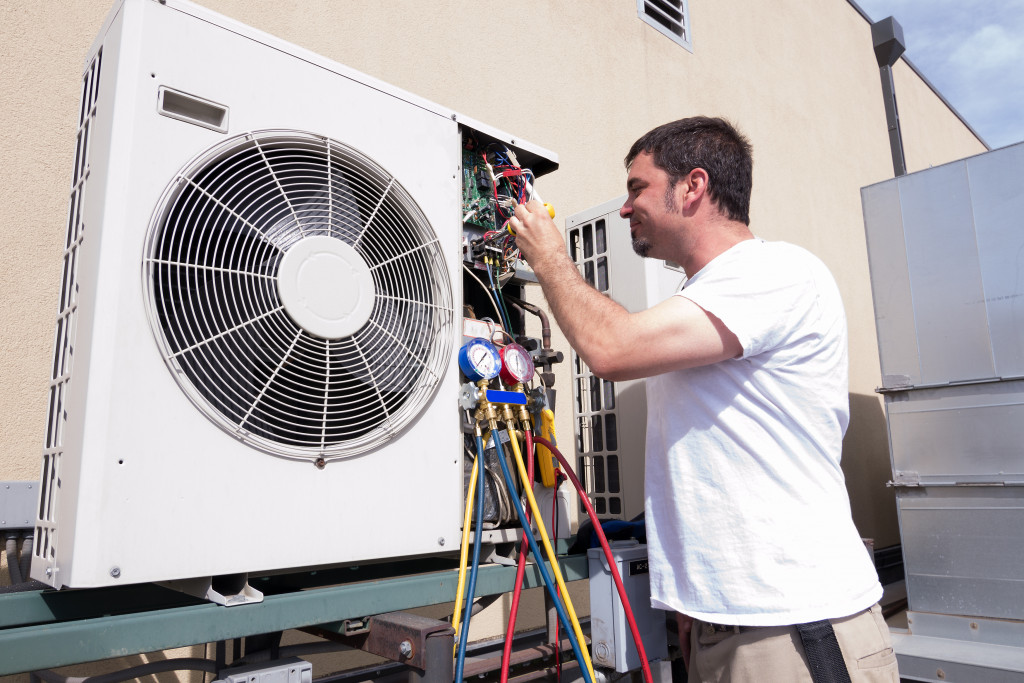If you own or manage a commercial building, then you know that one of the most important things to maintain is a comfortable indoor temperature. Not only is it essential for the comfort of your employees and customers, but it can also impact your bottom line. Here’s what you need to know about indoor temperature control and how to manage it effectively.
The Impact of Indoor Temperature on Business
The indoor temperature of your commercial building can impact your business. For example, if it’s too cold, your employees may be less productive and more likely to call in sick.
On the other hand, if it’s too hot, your customers may not want to stick around for long and may take their business elsewhere. In either case, managing the indoor temperature of your commercial building is crucial to maintaining a comfortable environment and a healthy bottom line.
There are a few key things to keep in mind when it comes to indoor temperature control:
- The ideal indoor temperature depends on the type of business you have. For example, if you have a retail store, you’ll want to keep the temperature on the cooler side so that your customers are comfortable browsing for long periods. On the other hand, if you have an office space, you’ll want to maintain a comfortable temperature so that your employees can focus and be productive.
- The indoor temperature should be consistent throughout the entire building. This can be a challenge, especially in larger buildings, but it’s essential to maintain a comfortable environment for everyone.
- The outdoor temperature can have an impact on the indoor temperature. If it’s hot outside, your building will likely be warmer than usual. Therefore, it’s crucial to take the outdoor temperature into account when setting the indoor temperature.
How to Manage Indoor Temperature Effectively
Install insulated roofing systems
One of the best ways to ensure that your building’s indoor temperature stays within the comfortable range is to install insulated roofing systems. This will help to keep the heat out in the summer and the cold out in the winter.
You should make sure that your building is well-insulated. This will help to prevent heat from escaping in the winter and prevent heat from entering in the summer. Good insulation will also help to reduce noise pollution, which can also have an impact on employee productivity.
Invest in an HVAC system
In addition, you should invest in a quality HVAC system. Ensure that your HVAC system is properly maintained and that your windows and doors are well-sealed. A good HVAC system will allow you to maintain a consistent temperature throughout your building and will also help to filter out any pollutants or allergens that could potentially trigger health problems for your employees.
Another essential thing to remember is that people’s comfort levels can vary, so it’s crucial to have a temperature control system that allows for individualized settings. This way, everyone can adjust the temperature to their comfort level and you won’t have to worry about anyone being too hot or too cold.
Close doors and windows
Remember to close your doors and windows when the temperature outside is extreme. This will help to keep the temperature inside your building more stable and will also help to reduce your energy costs.
Additionally, this can also help to reduce noise pollution and distractions, which can again impact employee productivity
Consider lighting
Be mindful of your lighting choices. Fluorescent lights can produce a lot of heat, so if possible, opt for LED lighting instead. This will help to keep your building cooler and will also reduce your energy costs.
Additionally, you should ensure your windows are allowing enough natural light into the space. This can help to reduce the need for artificial light, which will help keep your building cooler. It will also help to improve employee productivity and mood since natural light has been shown to have positive effects on both of these things.
Use fans or air-conditioning

If you find that the temperature in your building is still uncomfortable, you can use fans or air-conditioning to help cool things down. However, use these sparingly and only when necessary as they can increase your energy costs.
Additionally, if you do use air-conditioning, ensure you are using it in an energy-efficient way. For example, you should only cool the areas that are being used and not the entire building. You should also ensure that the temperature is set to a comfortable level so that people are not opening the windows to cool down, which will cause your energy costs to increase.
There are several things that you can do to manage your building’s indoor temperature effectively. Installing insulated roofing systems, investing in an HVAC system, and closing doors and windows when the outdoor temperature is extreme are all effective ways to keep your building comfortable. Additionally, you should be mindful of your lighting choices, use fans or air-conditioning sparingly, and consider using LED lights. By following these tips, you can keep your building cooler and save money on energy costs.

